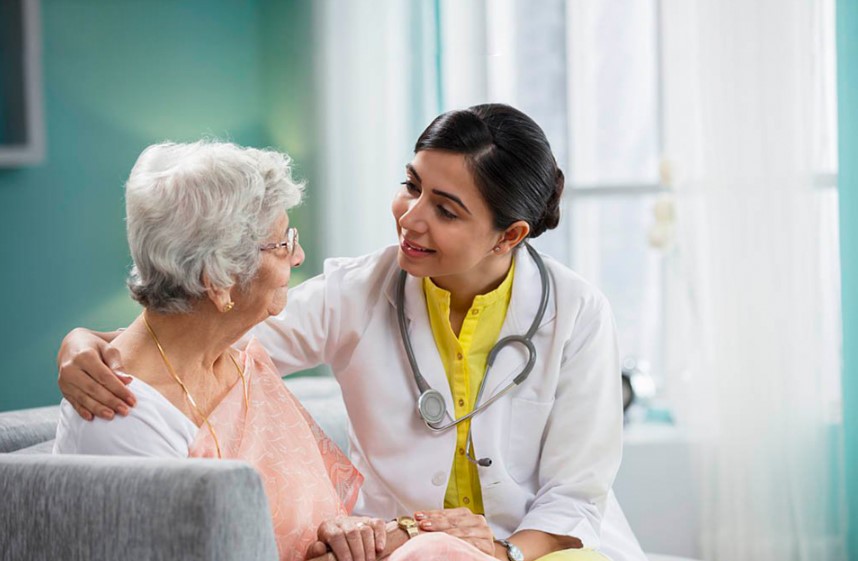In the contemporary realm of healthcare, the integration of advanced technologies, particularly those enabling continuous patient monitoring, has become instrumental. The technology stands at the forefront, reshaping the delivery of patient care by allowing for the remote tracking of vital signs and health metrics. Beyond its role in data collection, telehealth monitoring is transformative in optimizing resource utilization, fostering patient engagement, and ensuring timely interventions. This article delves into ten compelling reasons why incorporating such monitoring technologies is indispensable in modern healthcare, providing an in-depth analysis of its diverse and significant benefits.
Early Detection of Health Deterioration
Among the primary advantages of telehealth monitoring is its capacity to facilitate the early detection of health deterioration. Continuous monitoring of vital signs and health metrics enables healthcare providers to identify subtle changes in a patient’s condition before visible symptoms manifest. This proactive approach allows for timely interventions, preventing the progression of health issues and minimizing the likelihood of complications or emergencies. This early detection proves particularly critical for individuals managing chronic conditions, empowering healthcare professionals to tailor interventions and optimize treatment plans for better long-term outcomes.
Personalized Treatment Plans
Telehealth monitoring contributes significantly to developing personalized treatment plans by providing a continuous stream of patient data. This wealth of information empowers healthcare providers to tailor interventions based on individual health patterns and responses to treatment. Healthcare professionals can discern trends through data analytics, identifying the most effective strategies for specific patients. This personalized approach ensures that treatment plans are evidence-based and uniquely tailored to each patient’s needs, optimizing the chances of successful outcomes and improved overall health.
Enhanced Medication Management
Efficient medication management is a critical aspect of healthcare, and telehealth monitoring plays a pivotal role in ensuring adherence and effectiveness. By remotely monitoring patients’ responses to prescribed medications, healthcare providers can assess the impact on vital signs and adjust dosages or medications as needed. This real-time monitoring helps prevent adverse reactions and ensures patients receive optimal therapeutic benefits from their medications. Additionally, telehealth monitoring facilitates communication between healthcare providers and patients, allowing for timely adjustments and addressing any concerns related to medication adherence or side effects.
Improved Chronic Disease Management
Chronic diseases pose a significant challenge in healthcare, requiring ongoing management and monitoring. Telehealth monitoring excels in this domain by providing a comprehensive and continuous view of patients’ health status. For individuals with chronic conditions such as diabetes, hypertension, or heart disease, telehealth monitoring allows healthcare providers to closely monitor critical indicators and intervene promptly when deviations from normal ranges occur. This continuous oversight enhances the management of chronic diseases, reducing the risk of complications and hospitalizations while improving patients’ overall quality of life.
Efficient Post-Operative Care
Post-operative care is a critical phase in the patient journey, and telehealth monitoring streamlines this process. Instead of relying solely on intermittent clinic visits, healthcare providers can remotely monitor patients recovering from surgeries. This enables early detection of potential complications, such as infections or changes in vital signs, allowing for timely interventions. The convenience of remote monitoring also alleviates the need for frequent hospital visits, reducing the burden on patients and healthcare facilities. As a result, post-operative care becomes more efficient, ensuring a smoother patient recovery process while optimizing healthcare resources.
Facilitates Telehealth and Virtual Consultations
The integration of telehealth monitoring aligns seamlessly with the growing trend of telehealth and virtual consultations. This technology enables healthcare providers to conduct virtual visits while accessing real-time patient data. Patients can share their health metrics and vital signs during telehealth appointments, allowing healthcare professionals to assess their condition remotely. This not only enhances the accessibility of healthcare services but also promotes regular check-ins and follow-ups, contributing to a more comprehensive and patient-centric approach to healthcare delivery.
Enhances Data-Driven Decision Making
Data is a cornerstone of modern healthcare, and telehealth monitoring empowers providers with a wealth of actionable information. By collecting and analyzing large sets of patient data, healthcare professionals can make informed, data-driven decisions. This analytical approach extends beyond individual patient care, contributing to the advancement of medical research, treatment protocols, and population health management. The insights derived from telehealth monitoring enhance the quality of care individually and contribute to the broader understanding of healthcare trends and outcomes.
Reduces Healthcare Costs
Telehealth monitoring positively impacts healthcare costs by optimizing resource utilization and preventing avoidable healthcare expenses. Through continuous monitoring, healthcare providers can intervene early, reducing the likelihood of emergency room visits or hospital admissions. This improves patient outcomes and results in substantial cost savings for patients and healthcare systems. Additionally, the convenience of remote monitoring reduces the need for frequent in-person visits, lowering patient transportation costs and minimizing the strain on healthcare facilities. Overall, telehealth monitoring contributes to a more cost-effective and sustainable healthcare model.
Patient Empowerment Through Health Education
Telehealth monitoring goes beyond monitoring physical health. It also serves as a tool for patient education and empowerment. By providing patients access to their health data and trends, telehealth monitoring fosters a greater understanding of their conditions. This transparency encourages patients to participate actively in their healthcare journey, making informed decisions about lifestyle changes, medication adherence, and overall well-being. The continuous feedback loop between healthcare providers and patients enhances health literacy, leading to a more engaged and empowered patient population.
Adaptable to Diverse Healthcare Settings
The versatility of telehealth monitoring, like options provided by Accuhealth remote patient monitoring services, makes it adaptable to diverse healthcare settings, from urban hospitals to rural clinics. Its implementation is not limited by geographic constraints, making it a valuable tool for reaching underserved populations. In remote or rural areas where access to healthcare facilities may be limited, telehealth monitoring offers a solution for continuous monitoring and timely interventions. This adaptability reduces health disparities and ensures that patients, regardless of location, have access to high-quality, technology-enabled healthcare.
Final Words
Telehealth monitoring is an indispensable asset in modern healthcare, providing a multifaceted approach to patient care. Its ability to facilitate early detection, support personalized treatment plans, enhance medication management, and streamline various aspects of healthcare contributes to improved patient outcomes and resource optimization. As the healthcare landscape continues to evolve, the integration of telehealth monitoring stands as a testament to the transformative power of technology in fostering a more responsive, efficient, and patient-centric healthcare ecosystem. Embracing the diverse benefits of telehealth monitoring is not just a technological advancement; it is a fundamental shift towards a more proactive, data-driven, and accessible healthcare future.





